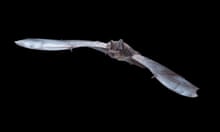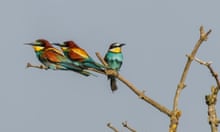“TikTok tadpole influencer” is not a career path that Hannah McSorley would have been told about at school. In lockdown, however, with her GSCEs on hold, the 17-year-old has turned a time-honoured pastime – collecting frogspawn – into a potentially lucrative online empire.
McSorley’s hypnotic daily videos of her tens of thousands of tadpoles have attracted 535,000 followers on TikTok as @.baby.frogs, leading to a deal with a US influencer agency.
“I’m honestly amazed by the following I have,” she said. “It’s just the simple things: tadpoles, frogs. People find it fascinating.”
A week into isolating with her family at their home in the countryside near Omagh in County Tyrone, Northern Ireland, McSorley came upon a patch of frogspawn at risk of drying up in a shallow puddle. She took it home in a jar, thinking it could be an educational experience for her nine-year-old brother.
Another clutch followed a week later, necessitating an upgrade in housing from one tub to two tubs, and now a paddling pool filled with plants and rocks.
“I always say there’s 37,928,” McSorley said. “I call it a generous estimate.”
What was intended as a project to keep her busy during lockdown has sparked a TikTok sensation, with videos of McSorley tending to her writhing brood drawing hundreds of thousands of views and many requests for help. She has written her own how-to guide for those wishing to start their own “journey with tadpoles”.
After extensive online research and consulting the Northern Ireland Environment Agency (NIEA), McSorley began feeding her tadpoles boiled lettuce or spinach daily and changes their pool water fortnightly. “A good rule of thumb is four tadpoles per litre of water,” she writes, a large enough quantity to protect against losses.
She has recorded three casualties in 72 days. “Unfortunately that’s just nature,” she said. “But they are remembered, and I do funerals for them.” Her heartfelt burial of one tadpole, named Fred, has attracted more than 1.8m views.
McSorley says she was a TikTok skeptic before lockdown, watching more than she posted, “but then I found my niche of tadpole videos”. Her account has started a trend, with 34.6m views to the #tadpole hashtag across TikTok. The biggest account, @tadpolegirl, from the US, has nearly 900,000 followers.
McSorley is interested in training as a vet, but also has plans to launch an educational YouTube channel in time to capitalise on frogspawn season early next year. In the meantime she has signed with the US influencer agency Markerly to grow her reach.
McSorley believes the appeal of tadpoles is that they are “totally nonpolitical”, though she did pause posting on #blackouttuesday last week in solidarity with the Black Lives Matter movement.
“I find the tadpoles very peaceful to watch. People love the wholesomeness of my videos and their simplicity,” she said. “It’s just about tadpoles living their best lives.”
Not for long though. The first tadpoles sprouted legs last week, suggesting to McSorley she has two or three weeks before she has a pool full of frogs. “Not the easiest thing to look after,” she said.
Her followers had already expressed concern. One Twitter user said there would soon be one frog for every three people in Omagh, “straight from the book of Exodus”.
One person who saw McSorley’s videos made an anonymous complaint to NIEA, who contacted her parents to discuss her intentions. “Honestly, my mum is the biggest fan of it all. She checks in on them before I do in the morning. She appears on my livestream sometimes.”
McSorley already has a strategy for the emergence of the frogs. She plans to release them in batches in ponds and streams within a two-mile radius of her home, so as not to overwhelm any one area, though she notes that numbers are already down because of the unseasonably warm spring.
“There aren’t as many frogs as people might think. It’s a very sad thing.Most of them will end up being eaten by birds, but some will come back to lay their eggs next year.”
McSorley intends to be ready for them: “I’m really hoping my dad will build me a pond,” she said.









